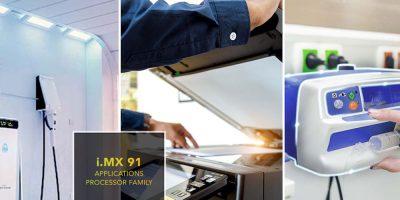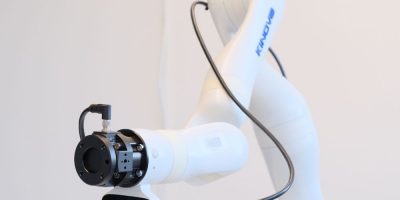Targeting motor control applications, Renesas Electronics has introduced three microcontroller (MCU) groups, including devices from its RX and RA families.
There are two new MCU groups from the RA family of Arm Cortex-M devices. The RA4T1 Group delivers 100MHz performance with up to 256kbyte of flash and 40kbyte SRAM. The MCUs are based around 100MHz Arm Cortex-M33 CPU cores with TrustZone and have integrated flash memory options from 128kbyte to 256kbyte and 40kbyte SRAM. In addition to an integrated trigonometric function unit as a hardware accelerator, they feature integrated analogue functions, including 12bit ADC, PGA, comparator and 12bit DAC. The MCUs are available in 32- to 64-pin packages options.
The second addition is the RA6T3 Group which offers 200MHz operating frequency and provides 256kbyte of flash and 40kbyte SRAM. These are based around a 200MHz Arm Cortex-M33 CPU core with TrustZone and have integrated flash memory of 256kbyte and 40kbyte SRAM. They have the same analogue functions as the RA4T1 Group and integrated communications options including USB 2.0, CAN FD, I3C, SCI and SPI. They are available in package options from 32- to 64-pin.
Both new groups offer features and functions specifically for motor control applications, including trigonometric function units (TFUs) for acceleration, advanced ADC with integrated PGA (programmable gain amplifier), with a choice of communication interfaces including CAN FD.
The MCUs are supported by the Renesas Flexible Software Package (FSP) to allow designers to port designs from other RA family devices.
Another introduction is the RX26T Group of MCUs from the RX family operating at 120MHz with up to 512kbyte of flash memory and 64kbyte SRAM. Renesas claimed that it has industry-leading real-time performance of 120MHz with no-wait flash memory access. The MCUs support 5.0V power supplies with high noise immunity and control accuracy, added Renesas. They also provide TFUs, on-chip timing, and interrupt control. Designers using Renesas’ RX24T MCUs can scale designs to the RX26T devices to take advantage of existing design software while realising performance and control efficiency improvements, said Renesas.
All of the new MCUs are available now and supported by Renesas’ Flexible Motor Control development kit that enables easy evaluation of motor control using permanent magnet synchronous motors (brushless DC motors), and the Renesas Motor Workbench development tool.







